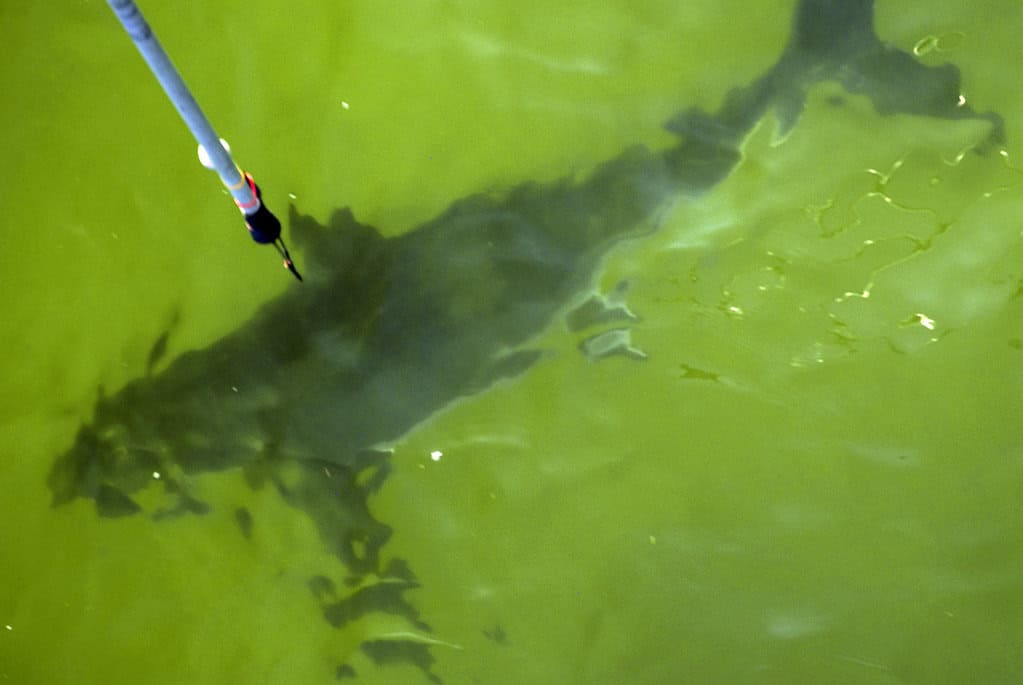Florida’s coastline spans over 1,350 miles, housing some of the most diverse marine ecosystems in North America. These waters serve as critical habitats for numerous shark species, from the common blacktip and bull sharks to the occasional great white passing through during migration. Understanding shark movements, behaviors, and population dynamics has become increasingly important as human activities continue to impact marine environments.
Scientists have developed sophisticated methods to track sharks, providing invaluable data that helps protect both sharks and humans. By monitoring shark movements, researchers can identify critical habitats, breeding grounds, and migration patterns. This information not only contributes to conservation efforts but also enhances public safety by predicting areas of increased shark activity. Florida’s position as a hotspot for both shark diversity and human coastal activities makes it a focal point for cutting-edge shark tracking research.
Evolution of Shark Tagging Technology
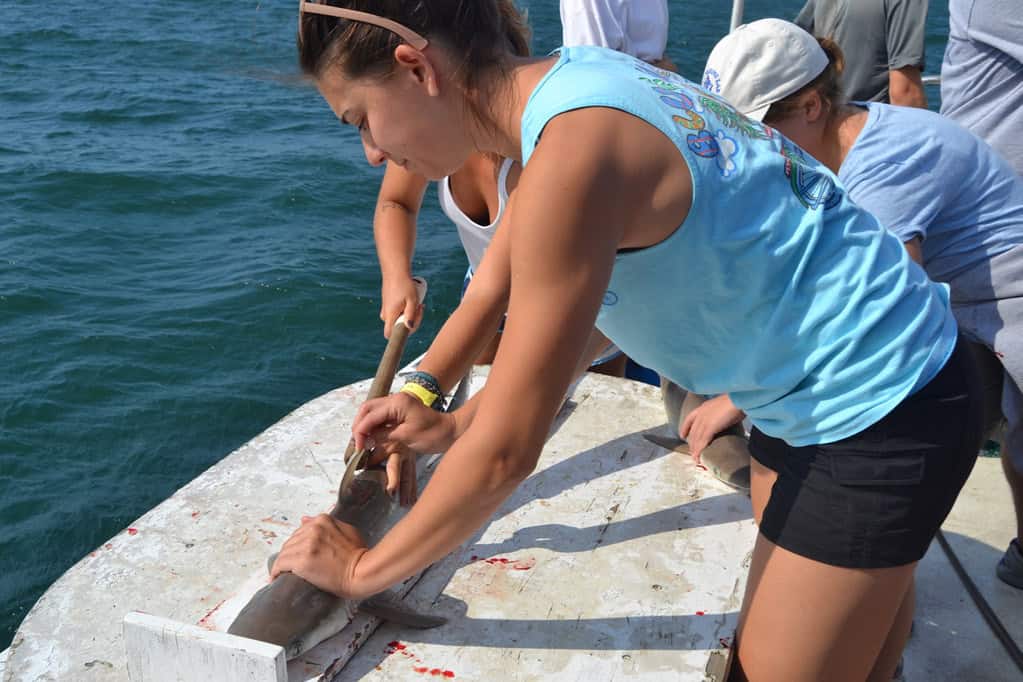
Shark tagging has come a long way since its beginnings in the 1960s when simple plastic dart tags were the primary tool. These early tags relied on fishermen or researchers recapturing the same shark to gather limited data about growth and movement. Today’s tracking technologies offer real-time monitoring capabilities that were unimaginable just decades ago. The evolution of these technologies has revolutionized our understanding of shark behavior and ecology.
Modern shark tracking in Florida employs a diverse array of technologies, from satellite tags that transmit data when sharks surface to acoustic transmitters that communicate with strategically placed underwater receivers. The development of smaller, longer-lasting batteries and more durable materials has enabled researchers to track sharks for years rather than months, providing unprecedented insights into their life histories. These technological advances have transformed shark research from simple population studies to comprehensive investigations of movement ecology, habitat use, and behavioral patterns.
Types of Tracking Devices Used in Florida

Scientists studying sharks off Florida’s coast employ several types of tracking devices, each with specific advantages depending on the research questions being addressed. Acoustic tags emit ultrasonic signals detected by underwater receivers when sharks swim within range (typically 500-800 meters). These tags, often no larger than a AA battery, can function for up to 10 years and are ideal for studying residency patterns in specific areas. Florida’s east coast features extensive arrays of acoustic receivers maintained by collaborative research networks.
Satellite tags represent another crucial tracking technology, particularly for species that travel long distances or frequently surface. These more expensive devices ($3,000-$5,000 each) attach to the shark’s dorsal fin and transmit location data to orbiting satellites when the fin breaks the water’s surface. For deeper studies of shark behavior, accelerometer tags record fine-scale movements, including tail beat frequency and body positioning, providing insights into energy expenditure and hunting behaviors. Pop-up archival satellite tags (PSATs) collect data on depth, temperature, and light levels before detaching after a predetermined period and floating to the surface to transmit their stored information.
The Capture and Tagging Process
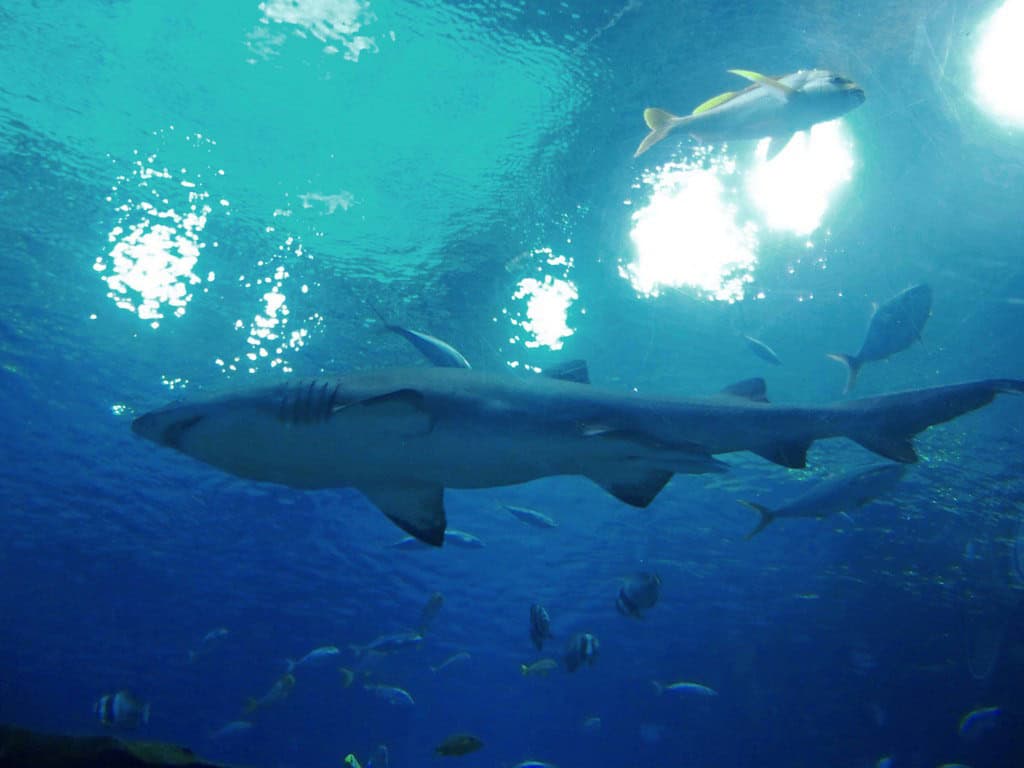
Tagging a shark begins with safe capture, typically using specialized fishing gear designed to minimize stress. Researchers in Florida often employ drum lines or longlines with circle hooks that reduce the risk of internal injuries. These lines are constantly monitored, ensuring sharks remain on the hook for minimal time. Once a shark is hooked, the team works quickly to bring it alongside the research vessel. For smaller species under 8 feet, researchers might briefly lift the shark onto a specialized platform attached to the boat, while larger sharks remain in the water during the entire procedure.
With the shark secured, scientists perform a well-choreographed tagging routine that typically takes less than 15 minutes. They first cover the shark’s eyes with a wet towel to reduce stress and induce a state of tonic immobility—a natural trance-like state. During this window, researchers collect biological samples (blood, tissue, parasites), take measurements, determine sex, and attach the appropriate tracking device. The attachment method varies by tag type: acoustic tags are surgically implanted in the abdominal cavity, while satellite tags are bolted through the dorsal fin using corrosion-resistant hardware. After tagging, sharks are quickly released and monitored until they swim away strongly, indicating successful recovery.
Florida’s Key Shark Research Organizations

Several prestigious research institutions lead shark tracking efforts along Florida’s coastline. The Mote Marine Laboratory in Sarasota stands at the forefront with its Center for Shark Research, established in 1991 as the nation’s only congressionally designated center for shark research. Their scientists have tagged thousands of sharks, maintaining one of the longest-running shark monitoring programs in the United States. The Florida Program for Shark Research at the Florida Museum of Natural History (University of Florida) coordinates statewide research efforts and maintains the International Shark Attack File, correlating shark movements with human-shark interactions.
OCEARCH, though not based exclusively in Florida, conducts significant expedition work in Florida waters, bringing together scientists from multiple institutions on their specialized research vessel. Their open-source Global Shark Tracker allows public access to tracking data from their tagged sharks. Nova Southeastern University’s Guy Harvey Research Institute focuses on pelagic shark species that migrate through Florida waters, while Florida Atlantic University’s Elasmobranch Research Laboratory specializes in tracking coastal shark species in South Florida’s complex ecosystems. These organizations frequently collaborate, sharing data and resources to create comprehensive monitoring networks that span Florida’s entire coastline.
Target Species and Why They’re Selected

Florida researchers focus their tracking efforts on several key shark species, selected based on conservation status, ecological importance, and human interaction frequency. Bull sharks receive considerable attention due to their ability to tolerate fresh water, allowing them to venture into Florida’s rivers and intracoastal waterways where human encounters are more likely. Tiger sharks, as apex predators that can exceed 14 feet in length, are tracked to understand their role in maintaining healthy reef ecosystems, particularly around the Florida Keys. Great hammerheads, listed as critically endangered by the International Union for Conservation of Nature, are closely monitored to identify critical habitats requiring protection.
Blacktip sharks, responsible for the spectacular winter migrations visible from Florida beaches, are tagged to document their seasonal movements and response to climate change. Lemon sharks, which exhibit strong site fidelity to Florida’s mangrove nurseries, help researchers understand habitat requirements for juvenile sharks. While great white sharks aren’t year-round residents, organizations like OCEARCH tag these massive predators as they pass through Florida waters during winter migrations, revealing previously unknown connection points between northern summer habitats and southern winter ranges. Each species provides unique insights into different aspects of shark ecology and conservation challenges.
Data Collection and Analysis Methods
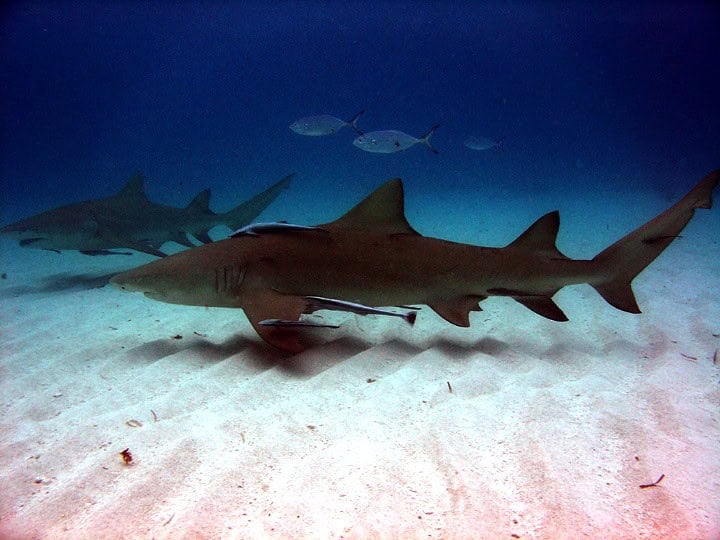
The tracking devices attached to sharks generate enormous datasets that require sophisticated analysis techniques. Acoustic monitoring networks along Florida’s coast consist of hundreds of receivers that log the date, time, and unique ID of any tagged shark that swims within range. These stationary arrays create “listening gates” at key locations such as inlets, channel markers, and artificial reefs. Satellite tags transmit more comprehensive data packages, including geolocation coordinates, depth profiles, water temperature, and sometimes acceleration data indicating hunting or mating behaviors.
Processing this information requires specialized software and statistical approaches. Geographic Information Systems (GIS) help visualize movement patterns, while state-space models and machine learning algorithms identify behavioral states from movement data. Researchers correlate shark tracking data with environmental variables like water temperature, salinity, dissolved oxygen, and prey abundance to understand what drives shark distribution. For comprehensive ecological insights, scientists integrate tracking data with biological samples collected during tagging, including stable isotope analysis from tissue samples that reveals information about diet and trophic position. This multi-faceted approach allows researchers to construct detailed portraits of shark ecology in Florida waters.
Challenges in Shark Tracking Research

Despite technological advances, tracking sharks off Florida presents numerous challenges. The marine environment is notoriously harsh on electronic equipment, with saltwater causing corrosion and biofouling (growth of marine organisms on devices) potentially interfering with tag function. Researchers continually battle against battery limitations, as longer-lasting power sources add weight and size to tags, potentially affecting shark behavior. Tag attachment itself presents difficulties, as researchers must ensure devices remain secured for months or years while not causing long-term harm to the animal.
Funding constraints often limit sample sizes, with satellite tags costing thousands of dollars each and requiring extensive vessel time for deployment. Data gaps remain a persistent issue, particularly for deeper-dwelling species that rarely come within range of surface-dependent satellite communications. The regulatory environment adds another layer of complexity, as researchers must navigate permits from multiple agencies including the Florida Fish and Wildlife Conservation Commission and NOAA Fisheries. Perhaps most challenging is the sheer scale of Florida’s coastal waters—over 8,000 square miles of state waters alone—making comprehensive coverage virtually impossible without international collaboration.
Surprising Discoveries from Florida Shark Tracking

Tracking studies have revealed unexpected aspects of shark behavior that challenge long-held assumptions. One of the most surprising discoveries involves the migration patterns of great hammerheads along Florida’s coast. Previously thought to be relatively sedentary, satellite tracking revealed some individuals travel over 3,000 miles annually, with one shark tracked from the Florida Keys to New Jersey and back. Lemon sharks have demonstrated remarkable natal philopatry—returning to the exact Florida bay where they were born to give birth to their own young, sometimes after decades away and migrations spanning thousands of miles.
Research has uncovered unexpected depth capabilities in several species, with bull sharks—typically considered coastal dwellers—recorded diving below 1,500 feet off Florida’s continental shelf. Tiger sharks tagged in the Florida Keys have shown remarkable navigation abilities, traveling to precise locations in the Bahamas and returning to specific Florida reefs on a predictable seasonal schedule. Perhaps most surprising has been the documentation of behavioral adaptation to human activities, with some coastal shark species altering their movement patterns in response to boat traffic, beach use intensity, and even the days of the week—suggesting a level of behavioral plasticity previously underappreciated in these ancient predators.
Conservation Applications of Tracking Data
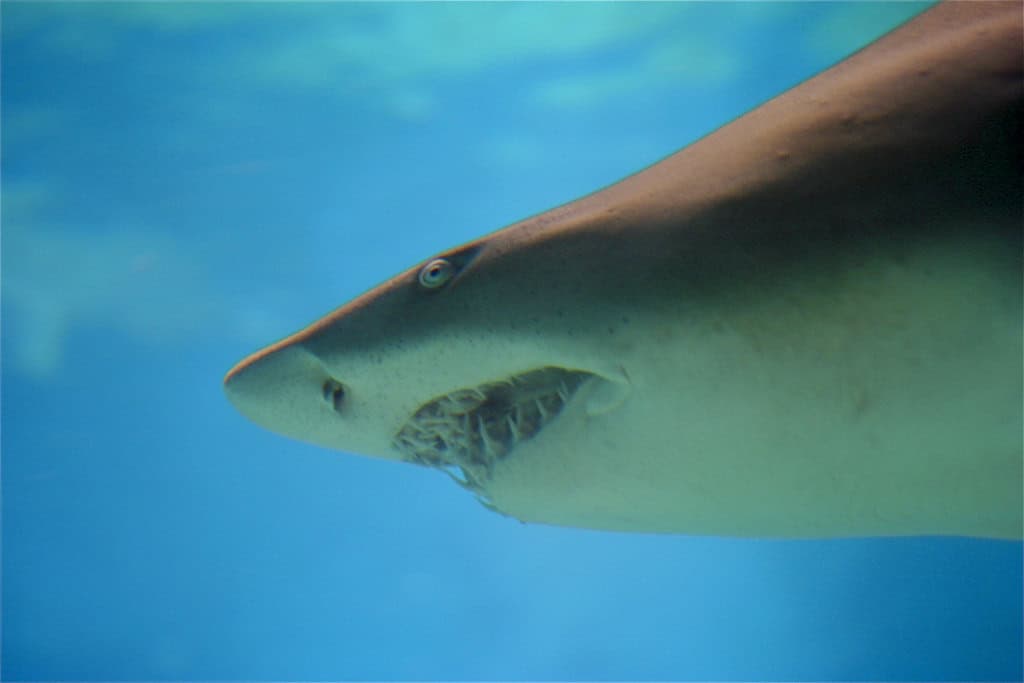
Tracking data has directly informed conservation policies protecting Florida’s sharks. By identifying critical habitats where sharks aggregate to mate, feed, or give birth, researchers have provided the scientific basis for marine protected areas and seasonal fishing restrictions. For example, tracking studies revealing the importance of specific nursery areas in Florida Bay led to enhanced protections for these sensitive habitats. Movement data showing how sharks regularly cross jurisdictional boundaries has supported international conservation agreements with neighboring Bahamas and Cuba.
Beyond habitat protection, tracking data influences fishing regulations by identifying areas and seasons where vulnerable species might be accidentally caught as bycatch. The Florida Fish and Wildlife Conservation Commission uses tracking information to refine shark fishing rules, including the 2019 shore-based shark fishing permit system designed to reduce mortality from improper catch-and-release practices. On a broader scale, movement data documenting long-distance migrations has supported the listing of certain shark species under international protection frameworks like the Convention on Migratory Species. Perhaps most importantly, tracking data helps researchers evaluate the effectiveness of existing conservation measures by monitoring how shark populations respond to protection efforts over time.
Public Engagement and Citizen Science Opportunities
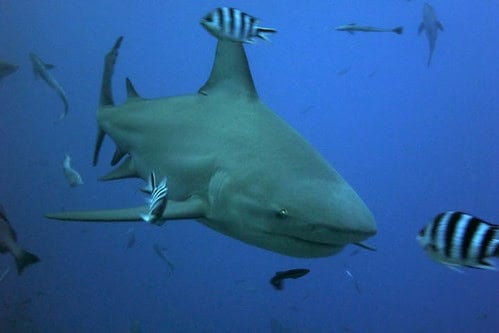
Florida’s shark tracking programs have pioneered innovative approaches to public engagement. Many tagged sharks have public-facing profiles on social media platforms, with organizations like OCEARCH and Guy Harvey Research Institute creating named identities for tagged individuals. These “celebrity sharks” generate millions of followers who track their movements online, creating unprecedented public investment in shark conservation. Educational programs bring tracking technology into Florida classrooms, with students adopting tagged sharks and integrating real-time tracking data into science curriculum.
Citizen science initiatives actively involve the public in shark research. The Mote Marine Laboratory trains recreational divers to report shark sightings through their Spot-A-Shark program, while anglers participate in cooperative tagging programs where they apply simple identification tags to sharks caught and released during fishing trips. Beach residents contribute to tracking efforts through the Shark Spotters program, using a standardized protocol to document shark sightings from shore. These public engagement efforts transform Florida’s shark tracking from purely scientific endeavors into community conservation initiatives, building crucial public support for shark protection while generating additional data points that complement the more sophisticated tracking technologies employed by researchers.
The Future of Shark Tracking in Florida

The next generation of shark tracking technology promises even greater insights into these enigmatic predators. Researchers are developing autonomous underwater vehicles (AUVs) that can follow tagged sharks for extended periods, collecting environmental data and even video footage of natural behaviors rarely observed by humans. Miniaturization continues to advance, with new tags small enough for juvenile sharks that previously couldn’t be tracked, allowing scientists to fill critical knowledge gaps about early life stages. Environmental DNA (eDNA) sampling techniques are being integrated with tracking studies, using water samples to detect shark presence through genetic material they leave behind.
Machine learning and artificial intelligence are revolutionizing data analysis, helping scientists identify patterns in vast tracking datasets that might otherwise remain hidden. These technologies enable predictive modeling of shark movements based on changing environmental conditions—potentially forecasting shark presence with greater accuracy. As climate change alters Florida’s marine ecosystems, long-term tracking studies will become increasingly valuable for documenting shifts in shark distribution and behavior. Emerging satellite systems with improved coverage and data transmission capabilities will enhance real-time monitoring, while new biochemical sensors attached to sharks will transform them into mobile oceanographic platforms, collecting data on water chemistry as they travel through Florida’s diverse marine environments.
Conclusion: Balancing Science, Conservation, and Public Safety

Shark tracking along Florida’s coast represents one of marine science’s most successful intersections of research, conservation, and public safety. The sophisticated technologies and methodologies employed by Florida’s research institutions have transformed our understanding of shark ecology while providing practical benefits for both shark conservation and human safety in coastal waters. As these tracking efforts continue to expand and evolve, they promise to reveal even more about these ancient predators that have roamed Florida’s waters for millions of years before humans arrived.
The collaborative nature of Florida’s shark tracking initiatives—bringing together government agencies, academic institutions, private organizations, and the public—serves as a model for marine conservation research worldwide. Through continued investment in tracking technologies and public engagement, Florida maintains its position at the forefront of shark research globally. Perhaps most importantly, these tracking studies have helped transform public perception of sharks from feared predators to essential components of healthy marine ecosystems worthy of protection. By continuing to follow sharks through Florida’s waters, scientists are ensuring these magnificent animals will continue to fulfill their ecological roles for generations to come.
As tracking technology continues to advance and datasets grow more comprehensive, the future of shark research in Florida looks bright. The knowledge gained through these efforts will be crucial as coastal ecosystems face mounting pressures from development, pollution, climate change, and fishing impacts. By understanding where sharks go and why, scientists can better protect both the sharks themselves and the habitats they depend on, ensuring the continued health of Florida’s marine environments for both wildlife and the millions of people who depend on these waters for recreation, food, and livelihoods.
- How Scientists Tag and Track Sharks Off Florida’s Coast - August 9, 2025
- Orangutan Moms Build a New Nest Every Night - August 9, 2025
- The Sacred Buffalo in Plains Indian Traditions - August 9, 2025

